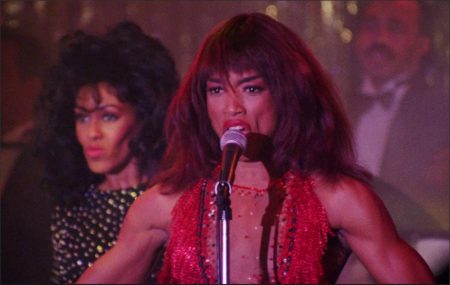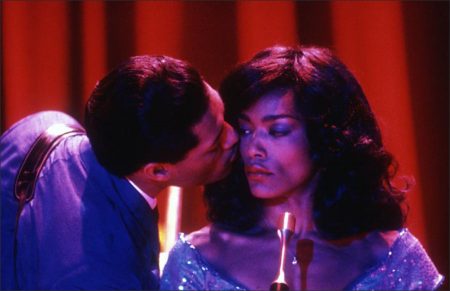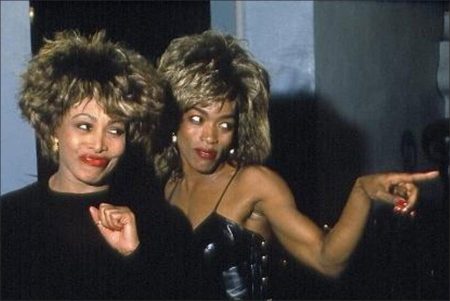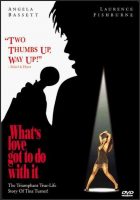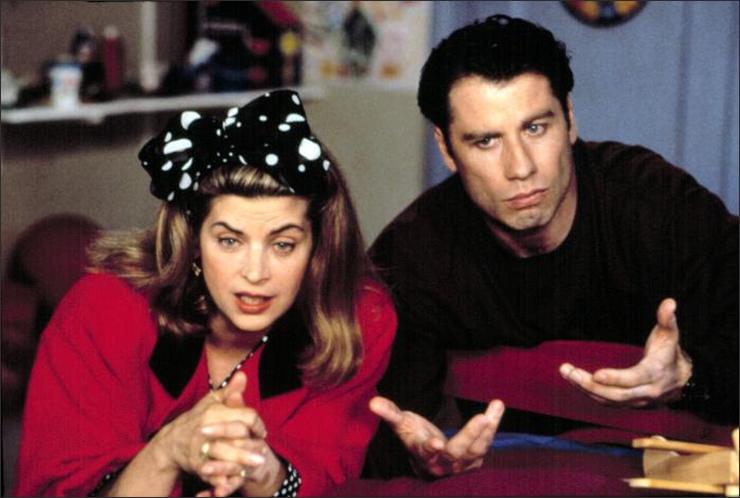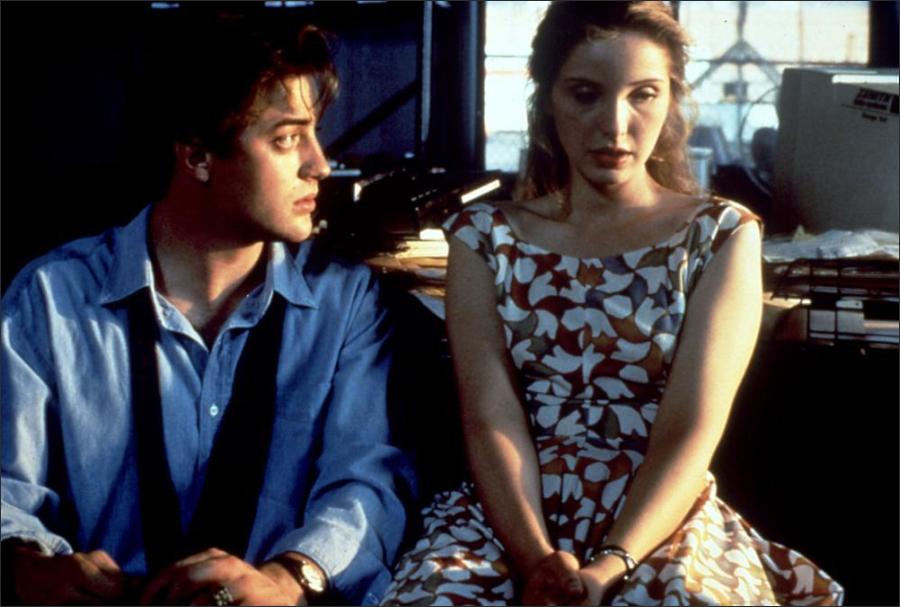Taglines: The triumphant true-life story of Tina Turner!
What’s Love Got to Do with It movie storyline. Anna Mae Bullock always had a special voice. Soon after arriving in St. Louis to live with the mother who had walked out when she was small, the now teenage Anna Mae soon attracts the attention of pop group leader Ike Turner. She becomes the band’s singer, his wife, and mother to his children – not all hers. In love with Ike and determined not to leave in the way her mother had, she finds herself the target of increasing violence from her unstable husband who can’t see who is making the band such a success.
What’s Love Got to Do with It is a 1993 American biographical film directed by Brian Gibson, loosely based on the life of Tina Turner. It stars Angela Bassett as Tina Turner and Laurence Fishburne as Ike Turner. The screenplay was adapted by Kate Lanier from the book I, Tina written by Tina Turner and Kurt Loder.
Both Ike and Tina Turner assigned rights to Lanier for their lives to be dramatized in the film. The film’s soundtrack featured the hit song “I Don’t Wanna Fight”, which went to number one in seven countries. In the United States, the film grossed almost $40 million and around $20 million in rentals. In the United Kingdom, it grossed nearly £10 million.
Film Review for What’s Love Got to Do with It
Tina Turner’s Story Through a Disney Prism : The singer’s film biography, ‘What’s Love Got to Do With It,’ focuses on her turbulent relationship with her mentor and ex-husband Ike Turner as well as her triumphant comeback.
So she stayed. “It was another time, another frame of mind,” she says by way of explaining the filmmakers’ “not being able to understand that some people can give their word and keep it.” The fact that she, at least in the beginning, was getting something from Ike was another consideration. “I was a church girl from Tennessee,” says Turner. “I didn’t know about being a star.”
In the end, Turner’s promise to Ike became a refrain running throughout the film. But Gibson thought he recognized other, darker threads in the fabric of Ike and Tina’s relationship. “Meeting Ike Turner, who had been deserted, created a kind of lock-and-key mechanism of their relationship,” he explains. “In my view what Tina got drawn into was the Ike who had been hurt and ill-treated by the world. Tina had been deserted and treated unfairly herself. And I think she wanted to heal him. She wanted to make it better for him and be a star for him. But of course you can’t fix somebody else. You can put in more and more, but it’s kind of an emotional Vietnam.”
On this point, Turner agrees. “It becomes harder and harder,” she says. “You either try to kill yourself or you say, ‘It’s time to go.’ I did both. I tried to kill myself. And I got out of there.” “What’s Love Got to Do With It” chewed through seven years, three screenwriters and two directors before it was finally greenlighted last fall on a hurry-up shooting schedule to get the movie into theaters in time for summer. Kate Lanier’s script alone went through 17 drafts. “We didn’t believe this movie was ever going to be made,” says Davies, the movie’s executive producer.
Touchstone originally assigned the script to Howard Ashman, a Tina fan and the Oscar-winning lyricist for Disney’s “Little Mermaid” and “Beauty and the Beast,” who wrote two drafts of the screenplay before his death in 1991. Former Rolling Stone reporter and current MTV news anchor Kurt Loder, the co-author of “I, Tina,” was subsequently approached by the studio but passed on the project. “They said they wanted it to be sort of an upbeat thing,” says Loder. “It just eluded me. I didn’t see how it could possibly be.”
The project drifted through yet another screenplay before coalescing around producers Chapin and Barry Krost, director Mario Van Peebles and Lanier. Earlier drafts of the script, according to Chapin and Lanier, had tended toward rigid biography. “They couldn’t get the movie to come to life,” says Chapin. “It was very structural, straightforward. The facts weren’t adding up to anything exciting.”
Lanier was hired partly to bring a woman’s perspective to the story. “It was Kate who had the notion of attacking it like a legend–a heroine on a quest and these were her trials,” says Chapin. Lanier’s 17 drafts notwithstanding, Touchstone was apparently pleased. Then Van Peebles withdrew from the project to direct “Posse,” which opened Friday. Brian Gibson–in what Chapin characterizes as “a blessing from heaven”–parachuted in as director, and the movie was finally under way.
Casting the role of Tina was, predictably, a formidable undertaking. Having Turner play herself was never seriously considered, according to Chapin. Coldly commercial considerations were also at work. “(Touchstone) knew there are hardly any bankable female stars,” says Chapin. “A bankable African-American star? She didn’t exist.”
Three finalists tested for the role: Robin Givens, Halle Berry and Bassett, then fresh from playing Katherine Jackson in the ABC miniseries “The Jacksons: An American Dream.” Gibson and Chapin wanted Bassett. “Brian and I felt she was it, because she has some physical resemblance and she had the ability. We knew this part was going to take incredible acting.” For her screen test, Bassett was dauntingly assigned Ike and Tina’s signature number, “Proud Mary.”
Bassett and the film’s choreographer, Michael Peters, who toured with Tina during her cabaret days, began by studying a videotape of Turner performing an a cappella version of the song. “We just sat for hours and hours watching,” Peters says. “Then I’d say, OK, we’re gonna do just lips this time. And we’d do that. Then I’d say, this time fingers and hands. It was like neurosurgery.”
What’s Love Got to Do with It (1993)
Directed by: Brian Gibson
Starring: Angela Bassett, Laurence Fishburne, RaéVen Kelly, Virginia Capers, Nita Woods Allen, Dororthy Thorton, Demetrice Cheathon, Helen Marie Lovelace
Screenplay by: Kate Lanier
Production Design by: Stephen Altman
Cinematography by: Jamie Anderson
Film Editing by: Stuart H. Pappé
Costume Design by: Ruth E. Carter
Set Decoration by: Rick Simpson
Art Direction by: Richard L. Johnson
Music by: Stanley Clarke
MPAA Rating: R for domestic violence, strong language, drug use and some sexuality.
Distributed by: Buena Vista Pictures
Release Date: June 25, 1993
Views: 376
